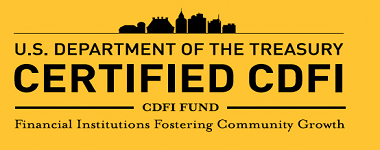Guest Post By Kristle Cortes – Federal Reserve Bank of Cleveland
Amid the sluggish recovery, there has been a lot of talk about ways to cut government spending. Yet sound government lending and subsidies can have lasting benefits for the economy as a whole for many years to come. Government programs that invest in communities, especially in areas with low-income borrowers, can help spur growth and earn a positive return on their investments.

These returns, however, can be difficult to measure since many programs have “double bottom lines.†In addition to profits, they have a more socially oriented goal, such as improving the economic opportunities for a disadvantaged group or strengthening the economic viability of a community. The effectiveness of a program in influencing these sorts of outcomes is hard to gauge. But the potential benefits of these government programs make their evaluation all the more important.
One such program is the CDFI Fund, which is part of the US Treasury. Established by the Riegle Community Development and Regulatory Improvement Act of 1994, the purpose of the fund is to invest in community development financial institutions (CDFIs) and support financial intermediation in areas with a great need for investment. Most CDFIs are small and localized institutions, and many are mission based, lending to creditworthy low-income borrowers who have a hard time getting a loan from a traditional bank. Increasing financial intermediation and easing credit constraints are ways to help stimulate economic growth, and the law recognized the need to provide financing to financial institutions working with low-income borrowers to support the long-term economic and social viability of low-income communities.
Using proprietary data from the US Treasury, it is possible to measure the impact of the CDFI Fund on the community financial institutions that receive funding and the return on the fund’s investment. By comparing the increase in lending at CDFIs that receive grants to those that apply but were rejected, we can evaluate how effective the program has been. The results of this comparison (see Cortés and Lerner 2013) show that CDFI Fund grants do increase lending; CDFI grants increase lending by 3 percent. For every dollar awarded, 45 cents is loaned out to borrowers in the first year and up to $1.60 is loaned out within three years.
The Fund: What It Is and What It Does
The core program of the CDFI Fund provides funds to qualified lending institutions for technical and financial assistance. Technical assistance awards can be used at the institutions themselves for various purposes, such as offsetting overhead costs or training staff and loan officers. Financial assistance awards are used to fund loans, loan-loss reserves, or capital reserves and can be as high as $2 million. In 2013 the CDFI Fund awarded over $172 million to institutions that work in low-income areas of the country. Since 1994, the Treasury has awarded $1.3 billion to CDFIs.
There are four types of institutions that apply for funding. The first and largest group is loan funds, nondepository institutions whose only aim is lending. In addition to loan funds, there are credit unions, banks, and venture companies. Institutions qualified to receive CDFI funding operate across the country but typically aim to make loans to low-income neighborhoods.

